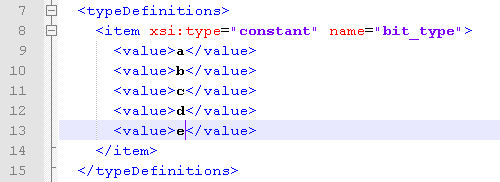OneMax 3
Even more fun with OneMax
Ok, now we will try to modify the Configuration file, to give you an idea of the potential of µGP. First of all, let's insert a macro in the global prologue and epilogue.

As you can see, the macro in the global prologue has a single floating point parameter, that can vary between -1 and 1. The macro in the global epilogue has a single integer parameter, that can vary between -100 and +50. Running µGP again with the changes performed in More fun with OneMax! will produce an individualA.in file with the new modifications included:
This is the global prologue. Here is a random floating point number (-1,1): 0.99662191756 00100011000100110110000111111101010110101000100101 And this is the global epilogue. Here, have this integer (-100, 50): -97
Now, let’s try to modify the values that the variable bit can assume.

The result:
This is the global prologue. Here is a random floating point number (-1,1): -0.9946805722 aaecbeacdcbbedeecbeecabecaaecaabbdbacedccaecadddad And this is the global epilogue. Here, have this integer (-100, 50): -39
And now, let’s try to introduce a new macro, with a fixed and a variable part. I chose to express a value such as "<first variable="">+<second variable="">":

The result:
This is the global prologue. Here is a random floating point number (-1,1): -0.988760162052031 ac+bcadac+ee+ca+bc+bedeec+aec+aed+cccb+ac+ca+eddad+caa+cdd+bbc+cad+bb+cc+eb+de+ed+babe+eed+ddace And this is the global epilogue. Here, have this integer (-100, 50): 26
